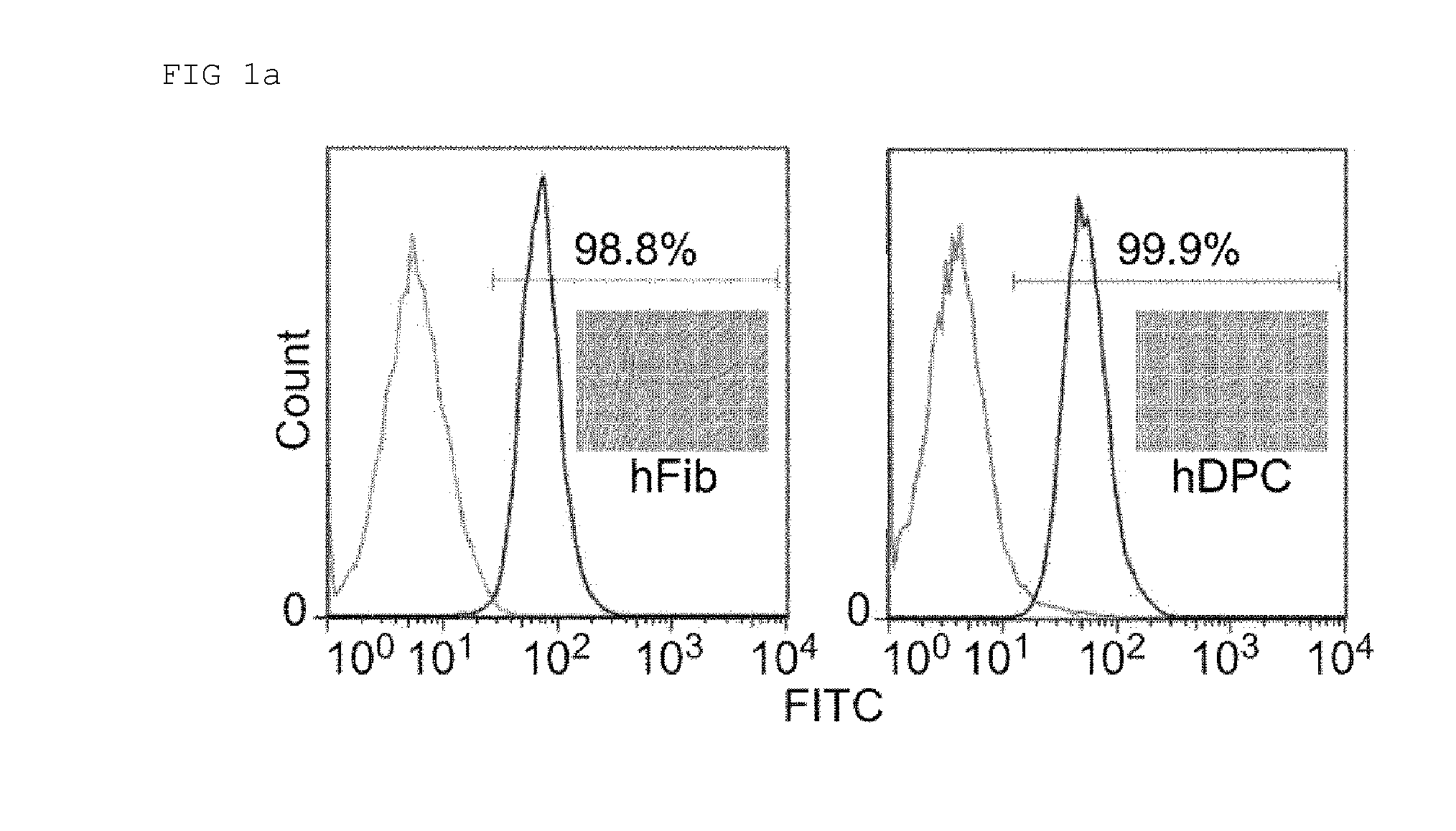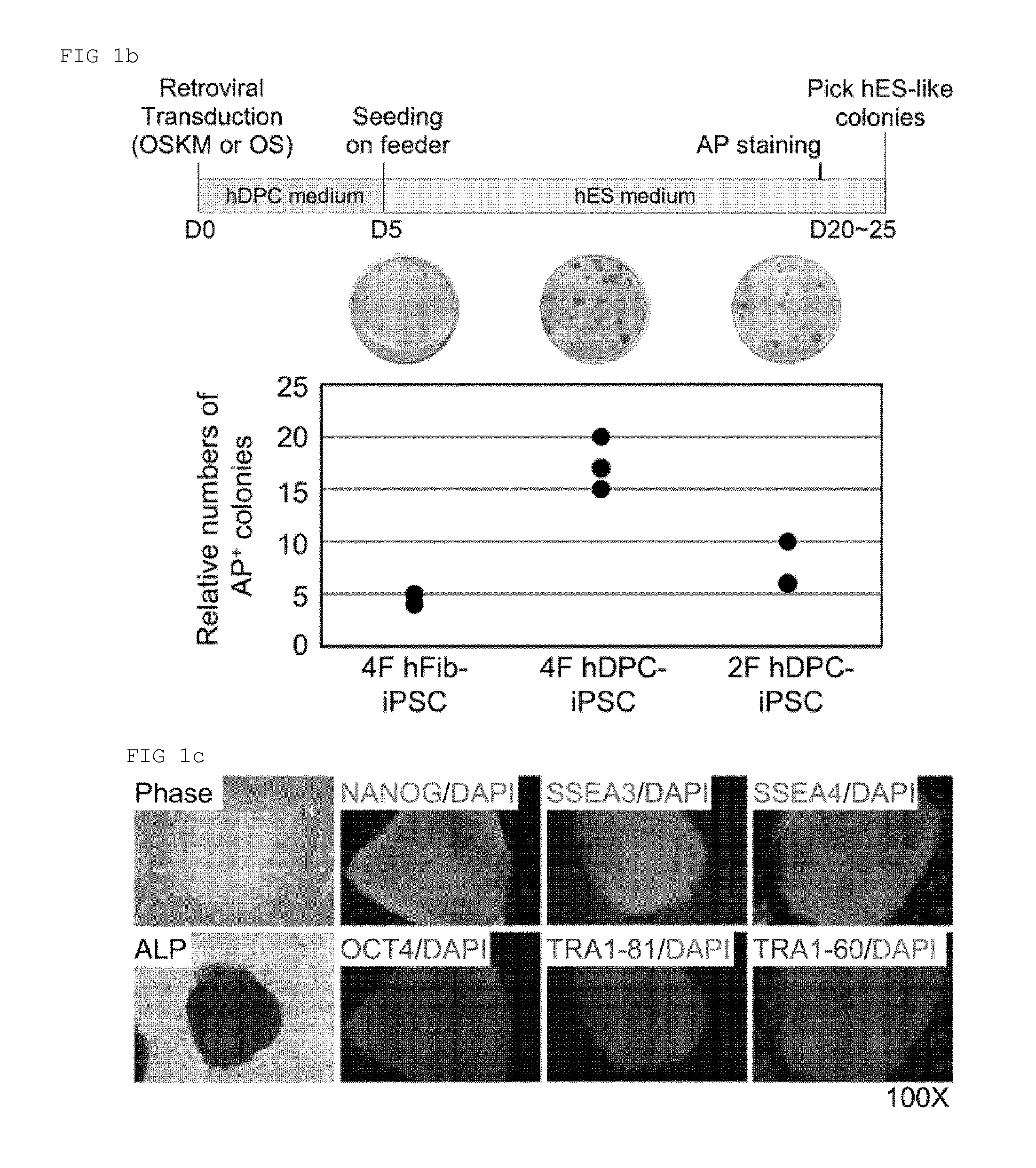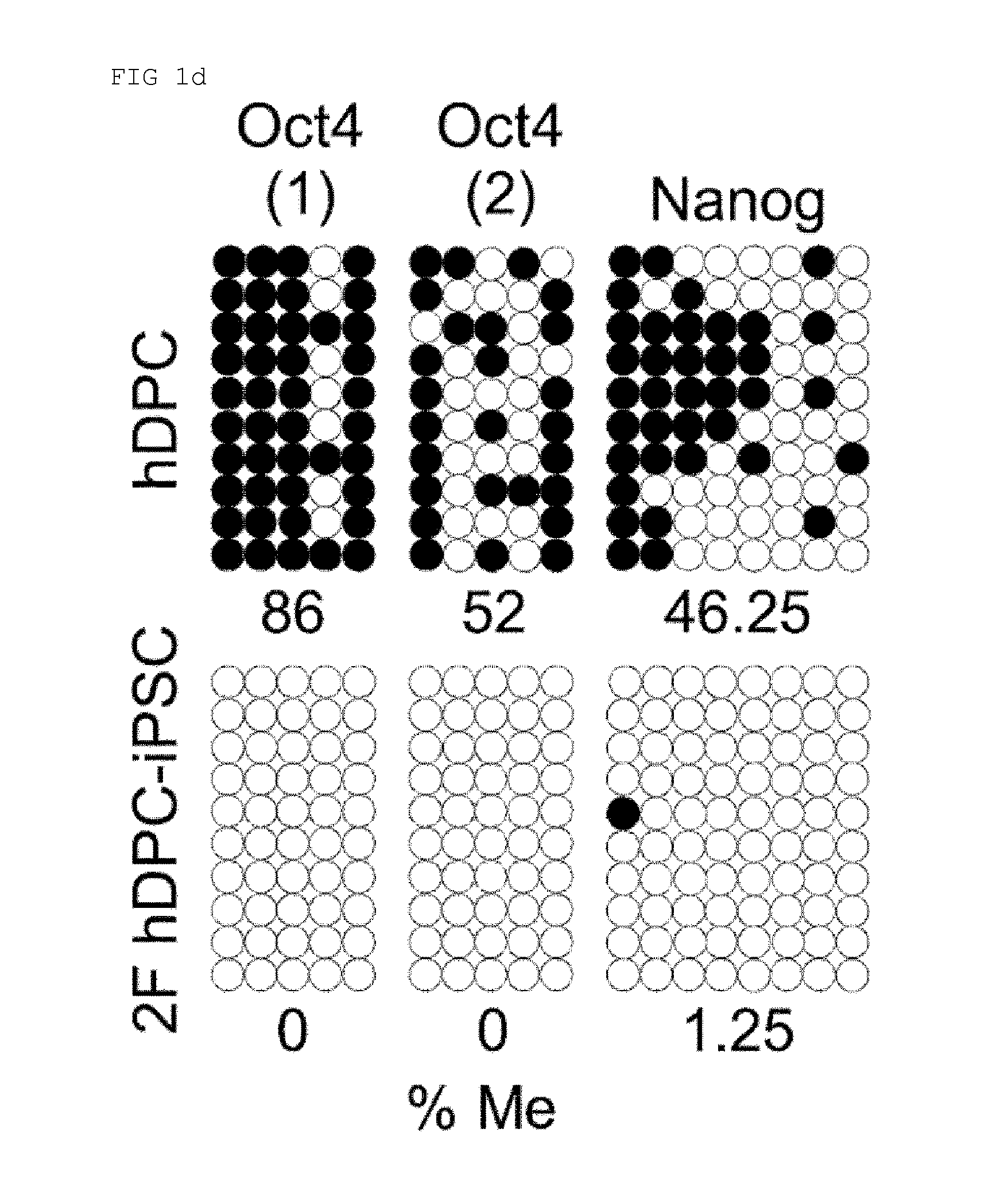Method for reprogramming of human dental pulp cell using oct4 and sox2 and use thereof
a human dental pulp and oct4 technology, applied in the field of human dental pulp cell reprogramming using oct4 and sox2, can solve the problems of limited number of functional cells, cell heterogeneity, and limited use of hipsc lines, which are used in the fabrication of epcs, and achieve high efficiency and high efficiency in producing induced pluripotent stem cells
- Summary
- Abstract
- Description
- Claims
- Application Information
AI Technical Summary
Benefits of technology
Problems solved by technology
Method used
Image
Examples
example 1
Cell Culture
[0146]1-1: Culture of Human Dental Pulp Cells (hDPCs) and Human Lung Fibroblasts (hFibs)
[0147]HDPCs were kindly provided by Prof. Joo-Cheol Park (Seoul National University, South Korea) and maintained in Dulbecco's modified Eagle's medium (DMEM, Invitrogen, Carlsbad, Calif., USA) supplemented with 100 U / ml of penicillin, 100 μg / ml of streptomycin (Invitrogen), and 10% fetal bovine serum (FBS, Invitrogen). Primary hFibs (IMR90, ATCC, Manassas, Va., USA) were cultured in MEM supplemented with 10% FBS, 100 μg / ml of streptomycin, 100 U / ml of penicillin, 1% non-essential amino acids (NEAA, Invitrogen), and 1 mM sodium pyruvate.
[0148]After serial culturing, almost all cells exhibited a homogeneous fibroblastic morphology and were positive for fibroblast-specific marker 1B10 (FIG. 1a).
[0149]1-2: Culture of H9 Human Embryonic Stem Cells (hESCs) and Human Induced Pluripotent Stem Cells (hiPSCs)
[0150]The H9 hESCs (WiCell Research Institute, Madison, Wis., USA) and hiPSCs were main...
example 2
Production of hiPSCs
[0151]pMX-retroviral vectors coding for human Oct4, Sox2, Klf4, and c-Myc (OSKM, Addgene Inc., Cambridge, Mass., USA) and packaging vectors pCMV-VSVG were co-transfected into GP2-293 cells using calcium-phosphate mammalian transfection kit (Clontech, Palo Alto, Calif., USA). 48 h and 72 h after transfection, the virus-containing supernatants were collected, filtered (0.45-μm filter, Millipore, Billerica, Mass., USA) and concentrated through ultracentrifugation (Beckman, Palo Alto, Calif., USA). The GFP receptor virus was used in virus titration. For the hiPSC generation, hDPCs and hFibs were seeded at a density of 1×105 cells per well in a six-well plate. Twenty four hours later, the cells were infected with virus and maintained with the respective primary cell culture medium in the presence of 8 μg / ml of polybrene (Sigma). Five days post-transduction, the cells were reseeded and further cultured in modified hESC medium after adding 1 mM nicotinamide. The medium ...
example 3
Characterization Analysis of hiPSCs
[0155]3-1: The Pre-Existing Analysis Method
[0156]AP staining, embryoid body (EB) formation, immunohistochemistry, genomic DNA PCR, bisulfite pyrosequencing, genotyping, karyotyping, and teratoma formation were performed through the pre-existing methods.
[0157]3-2: Microarray Analysis
[0158]Total RNAs were extracted using the RNeasy Mini Kit (Qiagen, Valencia, Calif., USA), labeled with Cy3, and hybridized to Agilent Whole Human Genome 4×44K Microarrays (two-color platform) according to the manufacturer's instructions. The hybridized images were scanned using an Agilent DNA microarray scanner and quantified with Feature Extraction software (Agilent Technology, Palo Alto, Calif., USA).
[0159]The normalization of the data and determination of the fold-change in gene expression were performed using GeneSpring GX7.3 (Agilent Technology). The average of the normalized signal channel intensity was divided by the average of the normalized control channel inte...
PUM
 Login to View More
Login to View More Abstract
Description
Claims
Application Information
 Login to View More
Login to View More - R&D
- Intellectual Property
- Life Sciences
- Materials
- Tech Scout
- Unparalleled Data Quality
- Higher Quality Content
- 60% Fewer Hallucinations
Browse by: Latest US Patents, China's latest patents, Technical Efficacy Thesaurus, Application Domain, Technology Topic, Popular Technical Reports.
© 2025 PatSnap. All rights reserved.Legal|Privacy policy|Modern Slavery Act Transparency Statement|Sitemap|About US| Contact US: help@patsnap.com



